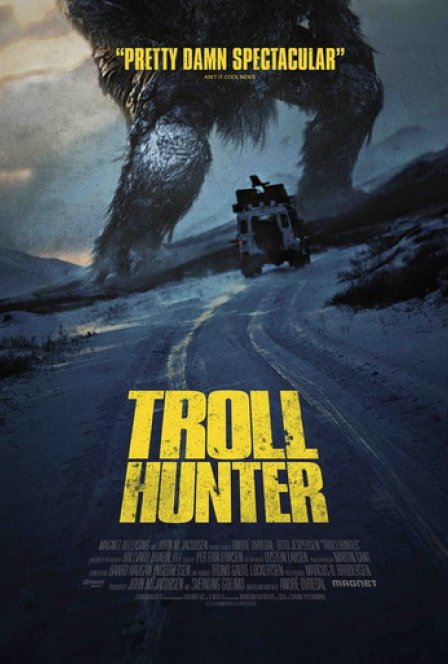It takes some serious chutzpah to make a “found footage” feature that humorously toys with a Western audience’s shared preconceived notions of classic folklore and hope against hope that people don’t dismiss it as merely another Blair Witch ripoff (which itself was a bit of ripoff, anyway). You might rightly ask what would possess a filmmaker — already into the second decade of our brave new century — to revisit the well that, even as early as the late 90s, the prevailing wisdom had deemed thoroughly sucked dry by the likes of Deodato and Belvaux. Granted, the found footage works of previous directors were probably the least of director André Øvredal’s worries when he and his modest crew were making Trollhunter, but you have to admire the gumption of a group of artists willing to offer a new take on such a thoroughly utilized cinematic form. The result of Øvredal and his crew’s efforts is a delightful and refreshing piece of European cinema that reinterprets a myth that, unlike vampires and werewolves, has not seen its rightful day(s) in the sun.
Trollhunter is ostensibly a hard drive of raw footage shot by a group of college journalism students attempting an expose of bear poaching, which is apparently a problem for the Scandinavians. The film crew finds themselves in rural Norway, a country whose stunningly vivid and wide-open panoramas are captured in such a way as to make you want to visit, and also (more importantly) to contrast with a couple of key scenes that effectively impart the sense of claustrophobia that Øvredal no doubt intended. While touring a campsite comprised mainly of bear hunters, the intrepid young investigative journalists happen upon a very peculiar man who virtually never leaves his beat-up camper during the day, smells terrible, and leaves for long stretches at night. Sensibly enough, the youths follow this mysterious stranger through the mountains and fjords of Norway (again, beautifully shot) and track him into a dark and ominous wood.
Here, where the film could easily have comfortably played itself out as a rigid genre piece reminiscent of countless others (and probably still remained entertaining enough), Øvredal changes focus almost completely and embarks upon an absurd and captivating sustained metaphor about the seemingly unavoidable nefariousness of bureaucracy in its management of wildlife. If the movie was less intelligently made and more brow-beating in its tone, I could totally see a group like the WWF or PETA fawning over it. The film implies a condemnation of humankind’s encroachment into wild spaces, and the way in which their attempts to manage the dangerous creatures that inhabit those spaces inadvertently causes a great deal of damage. This creates an unavoidable sympathy for the most physically destructive characters in the film and transforms an erstwhile black-and-white fairy tale narrative into something entirely troubling — in the best way possible.
There’s a certain way this film breathes, drawing the viewer into an absurd situation, virtually devoid of any recognizable element of modern society, creating a space somehow detached from time and culture, and then introducing forms that have to be filled out in triplicate and lingonberry pancakes. It’s a reminder that the minds behind Trollhunter don’t take themselves too seriously, even while they repeatedly illustrate their mastery of deconstructing fairy tales in ways neither academic nor sophomoric. The film plays with the viewer’s expectations, but never violates its own conceit. Where Trollhunter shines is in its confident experimentation with stereotypical characters and its shrewd understanding that cheap tricks would only negate the fragile premise it so joyfully (and sometimes hilariously) exploits. This film is evidence that sometimes a quasi-meta-horror film doesn’t need a throwaway twist to maintain its relevance.

